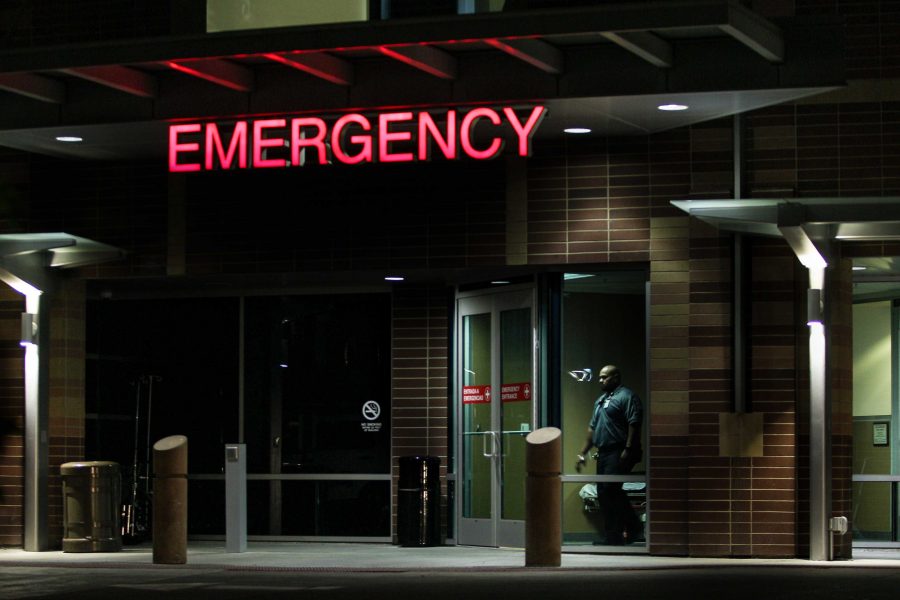While children were trick or treating and university students were out partying, Matt Difrancesca has spent his last four Halloweens in the emergency room. Difrancesca has been an ER doctor at the University of Utah Hospital for the past four years and has worked every Halloween since he started.
“On Halloween, we get a lot of young healthy people who are really sick,” Difrancesca said.
Between the hours of ten at night and two in the morning, college students begin to stream into the ER. At any given time that night, there are nearly 20 to 30 people looking for help.
Most of the ER cases seen on Halloween night are related to overdosing.
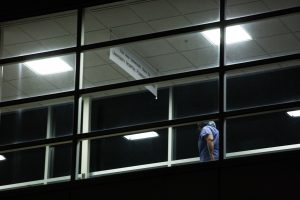
One of the top perpetrators that Difrancesca has seen over the years is the date rape drug, gamma-hydroxybutyric acid (GHB). GHB is also known as cherry meth, liquid E or scoop. GHB can make the subject completely unresponsive until they wake up hours later with no memory of what happened to them in that time.
“It’s scary for us when we see, especially young females, come in totally unresponsive,” Difrancesca said. “They usually get found by their friends after an unknown course of events. We don’t know if there’s been sexual assault, we don’t know what’s happened to them.”
Difrancesca recommends that if you do go out and party, avoid going alone.
“If you lose control and you don’t have anyone watching you carefully that night, who knows what happens? And you probably won’t know what happened when you wake up because you don’t remember,” Difrancesca said.
For those that might purposefully take drugs, Difrancesca encourages students to not mix them together and to be careful about what they are taking.
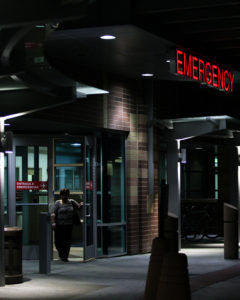
“I’m an anti-drug guy, but I understand.” Difrancesca said.
Loss of memory can come from drugs, a mixture of drugs or a few too many drinks.
“Count your drinks and be sure to keep track of that. Everyone likes to have a good time but you don’t want to wake up in the morning in the ER with a mechanical ventilator breathing for you,” Difrancesca said.
Alcohol serves as the primary reason that students are brought into the ER.
“It’s not uncommon to see people who have been drinking a lot,” said Troy Madsen, University of Utah Hospital ER doctor of 12 years. “Especially students or younger people who are brought in by their friends because they’ve just been drinking too much, and maybe they’re not responding or they’ve been vomiting or having issues related to that. It can sometimes be kind of an interesting scene where you’ll have four or five young people in a room with someone who has been drinking a lot. They’ve all got costumes on. It makes for a little more exciting night here in the ER.”
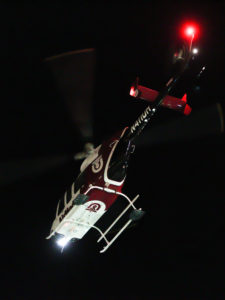
“Basically, when people have too much alcohol or when people are getting poisoned by alcohol, a concerning set of symptoms for that are vomiting, and they’re vomiting repeatedly,” one clinical and applied toxicology fellow at the Utah Poison Control Center, Kaitlyn Brown, told the Daily Utah Chronicle last year. “They also become altered in their mental status, so they get really sleepy. They can be confused, they can also have problems with their balance and not being able to walk straight or stay upright. The other issue is that they’ll get too sleepy, so they’ll get to the point where they’re not able to stay awake or are very difficult to arouse in that case, that is more severe.”
If you or a friend experience these symptoms, the Poison Control Center has a 24/7 line for consultation, which often results in being sent to the ER.
“If you’re worried at all, we’re happy to see you,” Difrancesca said. “We’d rather you come here and have us tell you that you’re okay and watch you for a couple of hours than stay at home. We’re never mad that people show up here, ever. We’re mad when people stay home sick and get worse.”
Even after a person finishes drinking, there are other risks to Halloween alcohol consumption.
“The number one thing is certainly anytime you combine alcohol use with anything else, it makes things worse. Certainly, don’t drink and drive and don’t drink and ride a bike,” Madsen said.
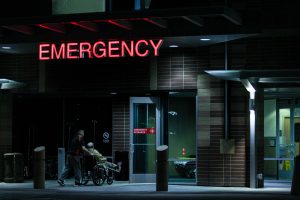
According to Safe Kids Worldwide, children are more than twice as likely to be hit by a car on Halloween than on any other day of the year.
“You hate to see those cases where kids have gotten hit while out trick or treating, so you’ve got to be very, very careful when you’re on the streets and be aware that there are lots of kids,” Madsen said.
Madsen says that weekday Halloweens are usually calmer than weekend Halloweens in the ER. This year, Oct. 31 falls on a Wednesday. It will still be busier than an average Wednesday, Madsen suspects.
“We want to keep everybody safe and healthy, but that’s not any different than any other day,” Difrancesca said.


